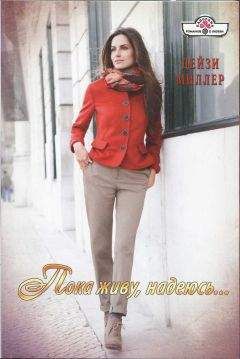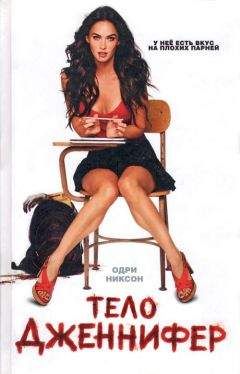Ричард Овери - Сталин и Гитлер
27. Stalin, Problems of Leninism, p. 405, The Results of the First Five-Year Plan’, report to the CC Plenum, 7 January 1933.
28. L. Samuelson ‘Mikhail Tukhachevsky and War-Economic Planning: Reconsiderations on the Pre-War Soviet Military Build-Up’, Journal of Slavic Military Studies, 9 (1996), p. 828.
29. R. W. Davies and M. Harrison ‘Defence spending and defence industry in the 1930s’, in J. Barber and M. Harrison (eds) The Soviet De fence-Industry Complex from Stalin to Khrushchev (London, 2000), p. 73; R. W. Davies ‘Soviet Military Expenditure and the Armaments Industry 1929–1933: A Reconsideration’, Europe – Asia Studies, 45 (1993), pp. 577–86.
30. Samuelson, Plans for Stalin’s War Machine, pp. 128–43; T. Martin ‘The Origins of Soviet Ethnic Cleansing’, Journal of Modern History, 70 (1998), pp. 837–47.
31. D. Stone Hammer and Rifl e: the Militarization of the Soviet Union 1926–1933 (Lawrence, Kans., 2000), pp. 185–6: Stalin told Voroshilov after the Manchurian invasion that ‘things with Japan are complicated, serious’.
32. Treue, ‘Hitlers Denkschrift’, p. 204; Stalin, Problems of Leninism, p. 461, Report to the Seventeenth Congress of the CPSU, 26 January 1924.
33. B.-J. Wendt Grossdeutschland: Aussenpolitik und Kriegsvorbereitung des Hitler-Regimes (Munich, 1987).
34. R. J. Overy ‘From “Uralbomber” to “Amerikabomber”: the Luftwaffe and Strategic Bombing’, Journal of Strategic Studies, I (1978), pp. 155–6.
35. W. S. Dunn The Soviet Economy and the Red Army 1930–1945 (London, 1995), p. 2–1; see too R. L. Schweller Deadly Imbalances: Tripolarity and Hitler’s Strategy of World Conquest (New York, 1998), pp. 206–7. Schweller calculates a ‘power weight’ in 1938/9, based on resources and military spending, of 100 for Germany, 72.5 for the USSR, 29.0 for Britain, 20.2 for the USA and 15.3 for France.
36. Davies, ‘Soviet Military Expenditure’, pp. 590–91, 601; G. Kennedy The Economics of Defence (London, 1975), p. 79; S. Andic and J. Veverka ‘The Growth of Government Expenditure in Germany’, Finanzarchiv, 25 (1964), p. 261. The fi gure in 1913 was 3.6 per cent.
37. Dunn, Hitler’s Nemesis, pp. 26–32; W. Deist ‘Die Aufrüstung der Wehrmacht’, in W. Deist et al. Das Deutsche Reich und der Zweite Weltkrieg (Stuttgart, 1979), p. 447. The fi gure by September 1939 was 2.87 million men.
38. M. Harrison Soviet Planning in Peace and War, 1938–1945 (Cambridge, 1985), pp. 250–53; Samuelson, ‘Mikhail Tukhachevsky’, pp. 805–9; R. Wagenführ Die deutsche Industrie im Kriege (Berlin, 1963), p. 74.
39. Overy, ‘From “Uralbomber” to “Amerikabomber” ‘, pp. 155–7; A. Bagel-Bohlan Hitlers industrielle Kriegsvorbereitung im Dritten Reich 1936 bis 1939 (Koblenz, 1975), pp. 117–21.
40. J. Rohwer and M. Monakov Stalin’s Ocean-Going Fleet: Soviet Naval Strategy and Shipbuilding Programme 1935–1953 (London, 2001), pp. 54–62, 103, 229–56.
41. J. Dülffer Weimar, Hitler und die Marine: Reichspolitik und Flottenbau 1920–1939 (Düsseldorf, 1973), pp. 488–504; W. Deist The Wehrmacht and German Rearmament (London, 1981), pp. 82–4.
42. T. M. Nichols The Sacred Cause: Civil-Military Confl ict over Soviet National Security, 1917–1992 (Ithaca, NY, 1993), p. 50; A. van Ishoven Messerschmitt (London, 1975), pp. 115, 172.
43. IWM, FD 3056/49 ‘Statistical Material on the German Manpower Position’, 31, July 1945, Table 7, based on returns from Reichsgruppe Industrie to the statistical offi ce.
44. J. Gillingham ‘The “Deproletarianization” of German Society: Vocational Training in the Third Reich’, Journal of Social History, 19 (1985/6), pp. 427–8.
45. Samuelson, Plans for Stalin’s War Machine, pp. 191–5; N. S. Simonov ‘Mobpodgotovka: mobilisation planning in interwar industry’, in Barber and Harrison, Soviet Defence-Industry Complex, pp. 216–17.
46. J. Heyl ‘The Construction of the Westwall: an Example of National-Socialist Policy-making’, Central European History, 14 (1981), p. 72; R. E. Tarleton ‘What Really Happened to the Stalin Line?’, Journal of Slavic Military Studies, 6 (1993), pp. 21–61.
47. R. Absolon Die Wehrmacht im Dritten Reich: Band IV, 5 Februar 1938 bis 31 August 1939 (Boppard am Rhein, 1979),
pp. 9–11; see too IWM, EDS Mi 14/478 Heereswaffenamt ‘Die personelle Leistungsfähigkeit Deutschlands im Mob.-Fall’, March 1939.
48. Akten zur deutschen auswärtigen Politik, Ser D, vol. vi (Baden-Baden, 1956), p. 481.
49. Dunn, Hitler’s Nemesis, pp. 27, 29, 57; Simonov, ‘mobilisation planning’, pp. 211–215; D. M. Glantz Stumbling Colossus: The Red Army on the Eve of World War (Lawrence, Kans., 1998), pp. 100–101.
50. On Soviet manpower mobilization G. F. Krivosheev (ed.) Soviet Casualties and Combat Losses in the Twentieth Century (London, 1997), p. 91; B. V. Sokolov ‘The Cost of War: Human Losses for the USSR and Germany, 1939–45’, Journal of Slavic Military Studies, 9 (1996), p. 165.
51. H. Rauschning Germany’s Revolution of Destruction (London, 1938), p. 133.
52. Stone, Hammer and Rifl e, pp. 3–5; I. Getzler ‘Lenin’s Conception of Revolution as Civil War’, in I. D. Thatcher (ed.) Regime and Society in Twentieth-Century Russia (London, 1999), pp. 109–17.
53. The Military Writings and Speeches of Leon Trotsky (6 vols, London, 1981), vol. iii, pp. 56, 374–5; vol. v, pp. 24–5.
54. Stalin, Works, vol. xii, p. 189, ‘Concerning the policy of eliminating the kulaks as a class’, 21 January 1930.
55. L. Viola The Best Sons of the Fatherland: Workers in the Vanguard of Soviet Collectivization (New York, 1987), p. 62.
56. Viola, Best Sons of the Fatherland, p. 64.
57. R. Hanser Prelude to Terror: The Rise of Hitler 1919–1923 (London, 1970), pp. 266–71; in general see D. Schumann Politisches Gewalt in der Weimarer Republik 1919–1933 (Essen, 2001); B. Ziemann ‘Germany after the First World War – a Violent Society?’ Journal of Modern European History, 1 (2003), pp. 80–95.
58. R. Taylor Literature and Society in Germany 1918–1945 (Brighton, 1980), p. 119.
59. V. Berghahn Der Stahlhelm: Bund der Frontsoldaten 1918–1935 (Düsseldorf, 1966), pp. 275–7, 286; P. Longerich Die braunen Bataillone: Geschichte der SA (Munich, 1989), pp. 159, 184. On the ambiguity of this identifi cation with war see S. Kienitz ‘Der Krieg der Invaliden. Helden-Bilder und Männlichkeitskonstruktion nach dem Ersten Weltkrieg’, Militärgeschichtliche Zeitschrift, 60 (2001), pp. 367–402.
60. W. Wette ‘From Kellogg to Hitler (1928–1933). German Public Opinion Concerning the Rejection and Glorifi cation of War’, in W. Deist (ed.) The German Military in the Age of Total War (Oxford, 1985), p. 83.
61. T. Nevin Ernst Jünger and Germany: Into the Abyss 1914–1945 (London, 1997), p. 108; Wette, ‘From Kellogg to Hitler’, p. 85. See too G. Mosse Fallen Soldiers: Reshaping the Memory of the World Wars (Oxford, 1990), pp. 159–80; K. Theweleit Male Fantasies: Volume II. Male Bodies: psychoanalysing the white terror (Oxford, 1989), pp. 143–76.
62. Wette, ‘From Kellogg to Hitler’, pp. 88–9.
63. W. H. Chamberlin Russia’s Iron Age (London, 1934), p. 193–4.
64. J. W. Baird To Die for Germany: Heroes in the Nazi Pantheon (Bloom-ington, Ind., 1990), pp. 101–3.
65. Baird, To Die for Germany, p. 106.
66. F. J. Stephens Hitler Youth: History, Organisation, Uniforms, Insignia (London, 1973), pp. 5–7, 10–14, 37, 44–5; C. Schubert-Weller Hitler-Jugend: Vom ‘Jungsturm Adolf Hitler’ zur Staatsjugend des Dritten Reiches (Weinheim, 1993), pp. 165–88; L. Pine ‘Creating Conformity: the Training of Girls in the Bund Deutscher MädeV, European History Quarterly’, 33 (2003), pp. 371–5, 377–80.
67. W. Benz ‘Vom freiwilligen Arbeitsdienst zur Arbeitsdienstpfl icht’, Vierteljahrshefte für Zeitgeschichte, 16 (1968), pp. 317–46.
68. Bank of England, German fi les E8/56 204/8 C. A. Gunston ‘The German Labour Service’, The Old Lady, 10 (December, 1934), pp. 277–87.
69. A. E. Gorsuch ‘“NEP Be Damned”: Young Militants in the 1920s and the Culture of Civil War’, Russian Review, 56 (1997), pp. 566–8, 576.
70. Chamberlin, Russia’s Iron Age, pp. 200–202; Erickson, Soviet High Command, pp. 307–8.
71. J. W. Young Totalitarian Language: OrwelVs Newspeak and its Nazi and Communist Antecedents (Charlottesville, Va., 1991), p. 92.
72. Stephens, Hitler Youth, p. 5; on the idealization of the warrior see P. Reichel ‘Festival and Cult: Masculine and Militaristic
Mechanisms of National Socialism’, in J. A. Mangan (ed.) Shaping the Superman: Fascist Body as Political Icon – Aryan Fascism (London, 1999), pp. 153–67.
73. Getzler, ‘Lenin’s Conception of Revolution’, p. 109.
74. Military Writings of Leon Trotsky, vol. iii, p. 374.
75. Chamberlin, Russia’s Iron Age, p. 299.
76. M. Kipp ‘Militarisierung der Lehrlingsausbildung in der “Ordensburg der Arbeit”’, in U. Hermann and U. Nassen (eds) Formative Ästhetik im Nationalsozialismus (Weinheim, 1994), pp. 2.09, 216–17. See too O. Bartov ‘The Missing Years: German Workers, German Soldiers’, in D. Crew (ed.) Nazism and German Society, 1933–1945 (London, 1994), pp. 54–60; W. Wette ‘Ideologien, Propaganda und Innenpolitik als Voraussetzung der Kriegspolitik des Dritten Reiches’, in Deist et ai, Deutsche Reich und der Zweite Weltkrieg, pp. 152–4, 166–73.
77. L. Peiffer ‘“Soldatische Haltung in Auftreten und Sprache ist beim Turnunterricht selbstverständlich” – Die Militarisierung und
Disziplinierung des Schulsports’, in Hermann and Nassen, Formative Ästhetik in Nationalsozialismus, pp. 181–3.
78. Military Writings of Leon Trotsky, vol. v, p. 24.
79. S. Fitzpatrick Everyday Stalinism. Ordinary Life in Extraordinary Times: Soviet Russia in the 1930s (Oxford, 1999), p. 17.
80. K.-J. Müller Das Heer und Hitler. Armee und nationalsozialistisches Regime 1933–1940 (Stuttgart, 1969), p. 63.
81. P. Hayes ‘Kurt von Schleicher and Weimar Polities’, Journal of Modern History, 52 (1980), pp. 37–40 for Schleicher’s view of politics.
82. Erickson, Soviet High Command, pp. 316–17.
83. von Hagen, Soldiers in the Proletarian Dictatorship, pp. 206–9; Military Writings of Leon Trotsky, vol. v, p. 23.
84. Erickson, Soviet High Command, p. 309; von Hagen, Soldiers in the Proletarian Dictatorship, pp. 94–100, ch. 5 passim.
85. Bayer, Evolution of the Soviet General Staff, p. 162.
86. Samuelson, Plans for Stalin’s War Machine, pp. 108–9
87. E. O’Ballance The Red Army (London, 1964), pp. 116–18.
88. V. Rapaport and Y. Alexeev High Treason: Essays on the History of the Red Army, 1918–1938 (Durham, NC, 1985), p. 12.
89. H. J. Rautenberg ‘Drei dokumente zur Planung eines 300,000-Mann Friedenheeres aus dem Dezember 1933’, Militärgeschichtliche Mitteilungen, 22 (1977), pp. 103–39; M. Geyer ‘Das Zweite Rüstungsprogramm (1930–1934)’, Militärgeschichtliche Mitteilungen, 17 (1975), pp. 25–72; W. Bernhardt Die deutsche Aufrüstung 1934–1939 (Frankfurt am Main, 1969), pp. 72–4, 84.




